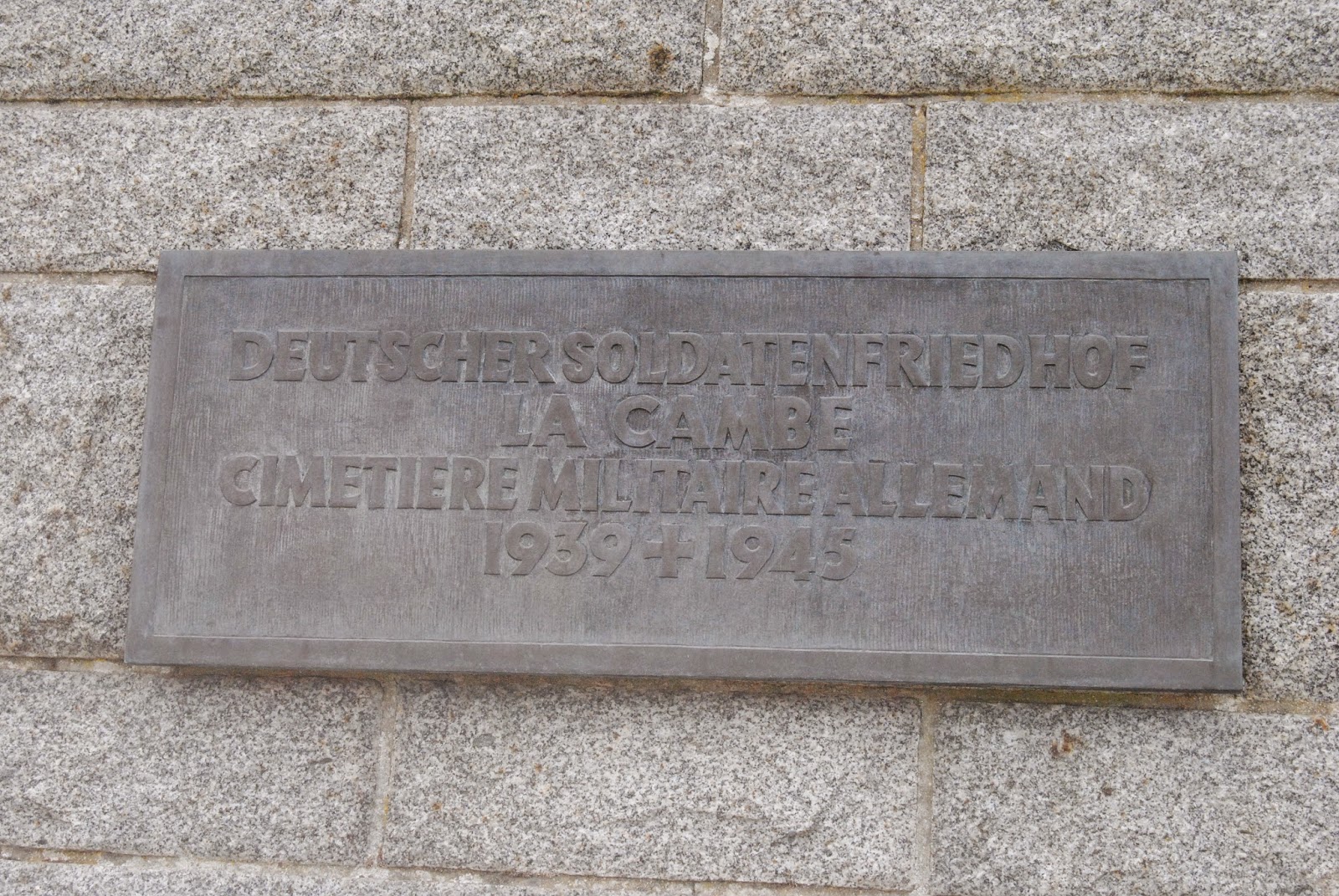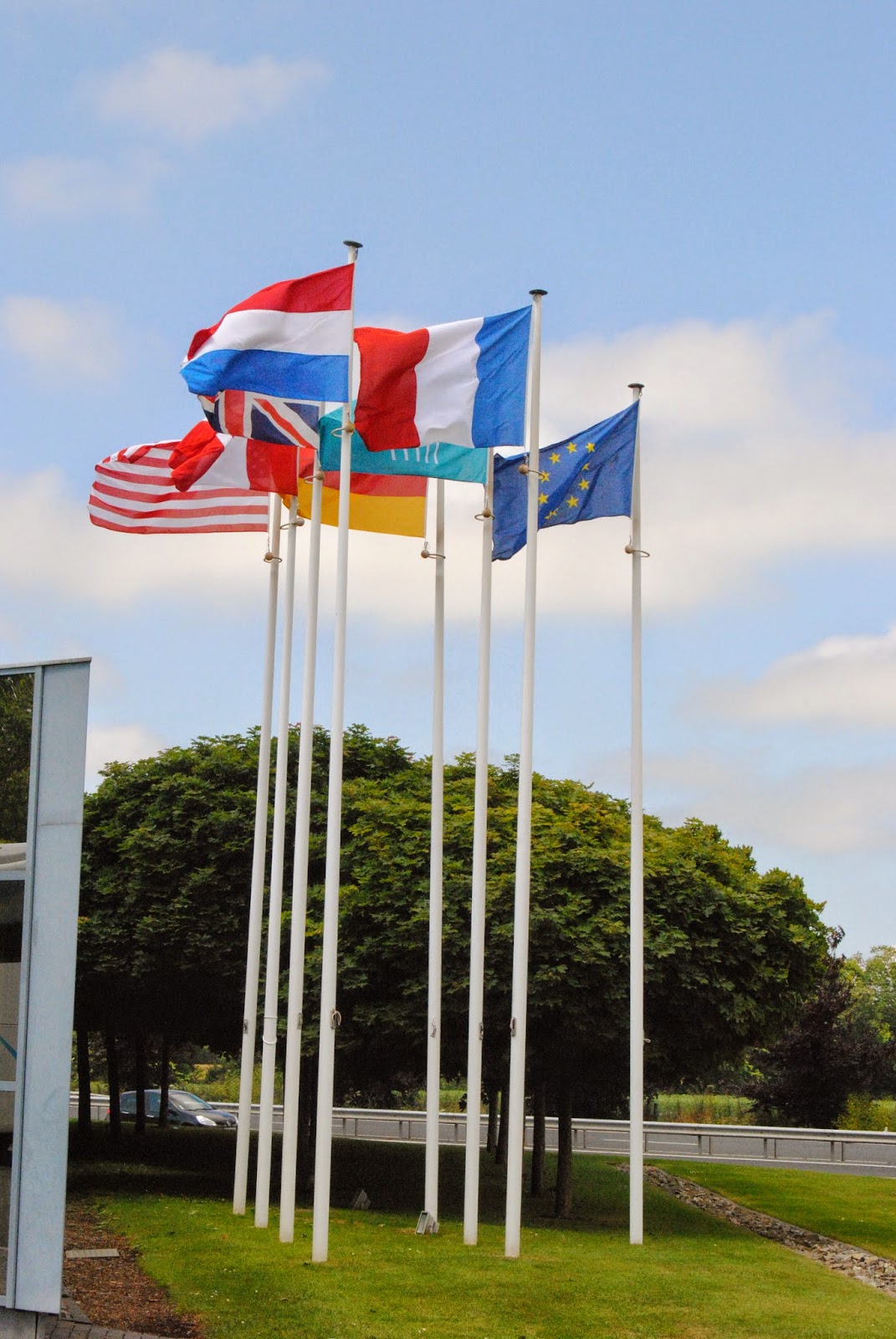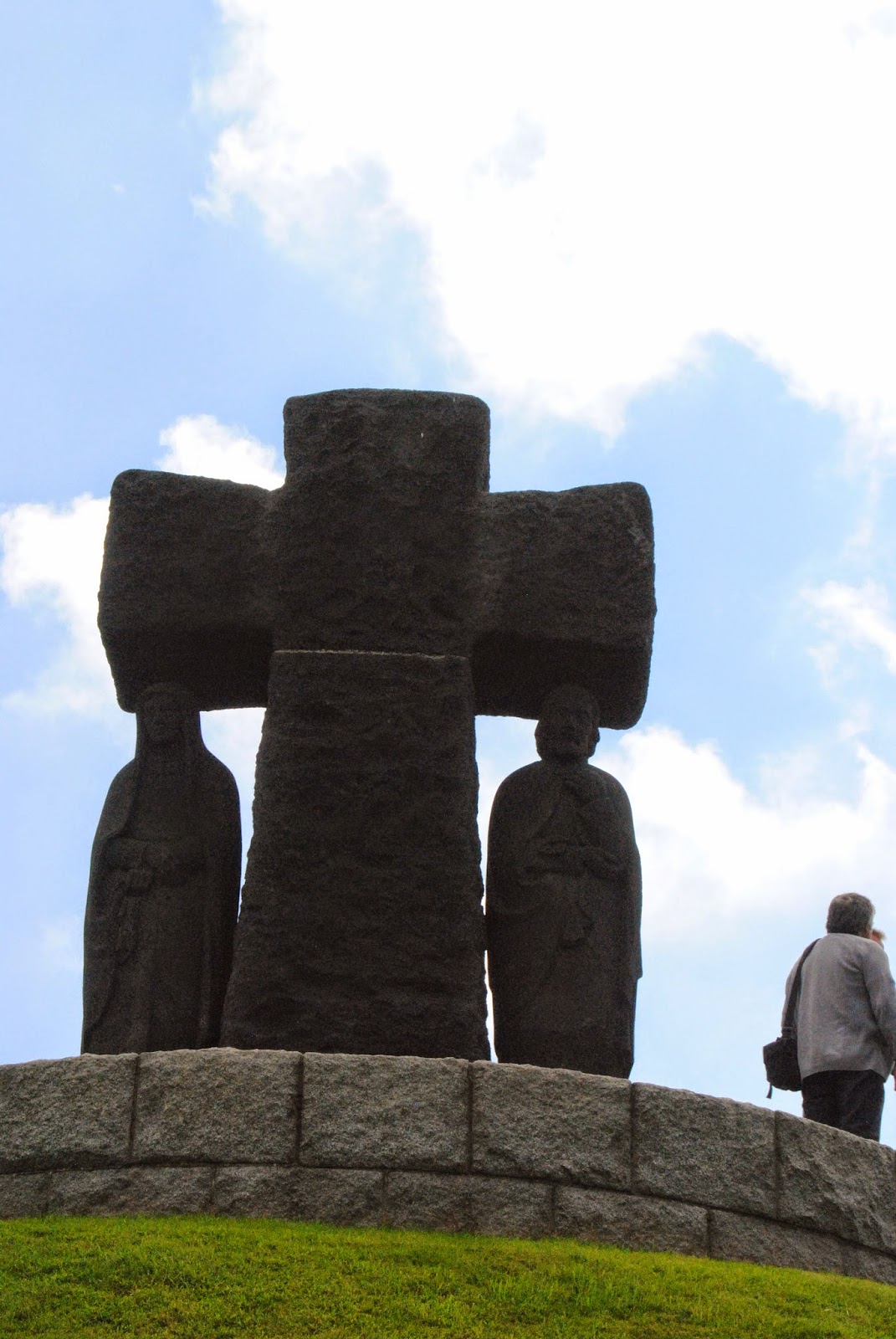 |
| This monument is in the center of the cemetery and people have placed poppy wreaths around it. We also found poppy wreaths at the German cemetery. |
 |
| Like the American military cemeteries, the grave markers were uniform and in perfect rows, regardless of the direction that you looked. |
 |
| Unlike the American military cemetery, each grave had a small flowering bush planted beside it. I don't know if those were placed by family members or by the British military. |
 |
| In the rear of the cemetery, the graves stood in a curve, which broke the uniformity of the grave markers. |
 |
| This monument across from the cemetery lists the names of 1800 British soldiers who have no known grave. |
 |
| We also stopped at the German Cemetery. I recently learned that this was once one of the temporary cemeteries for the Americans, and eventually designated as a German Cemetery. |
 |
| A hill with a cross at the top dominates the center of the cemetery. |
 |
| The markers in this cemetery were flat, with a set of five crosses interrupting the landscape in regular intervals. |
 |
| And a good portion had no name on them, such as this marker identifying "Two German Soldiers." |































No comments:
Post a Comment